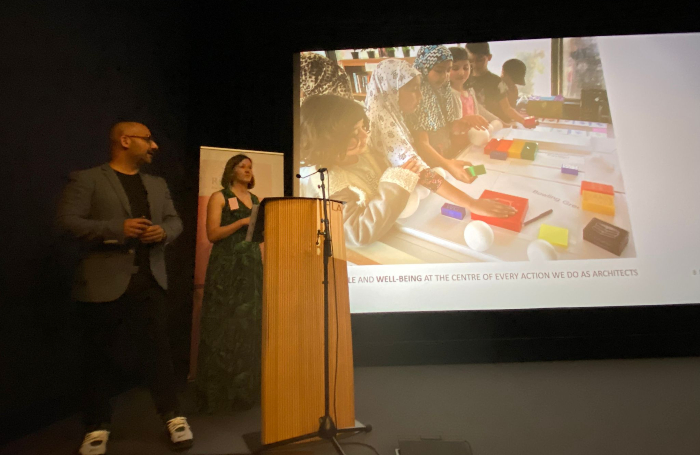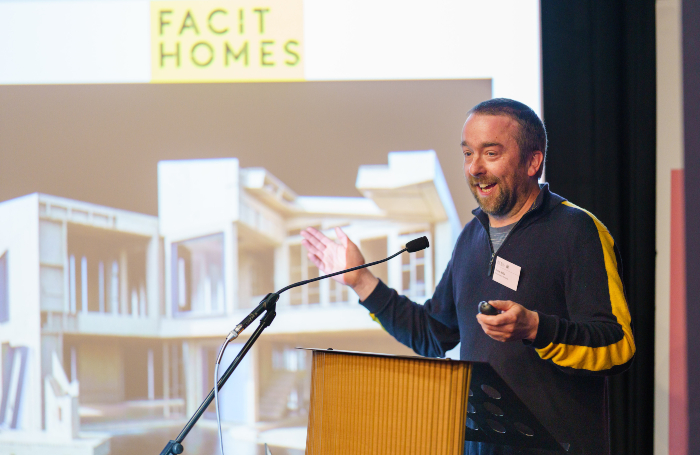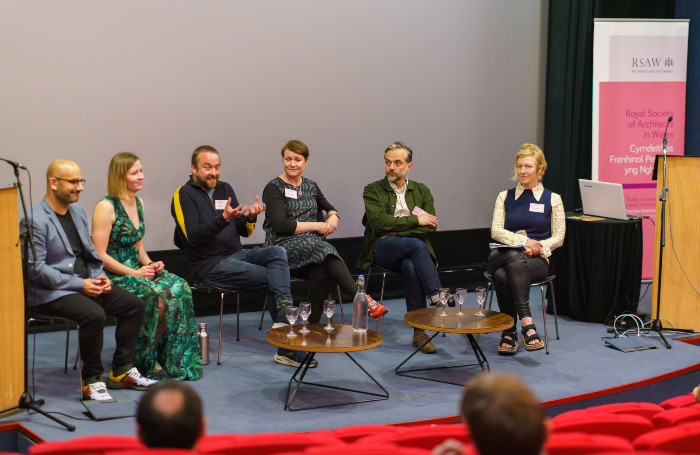It was a fatal day when a QS invented the term ‘value engineering’ which everyone knew was a platitude for ‘cost cutting’.
‘Value’ in architecture has always been a slippery notion. So for the first face-to-face RSAW Spring conference in over two years at the Aberystwyth Arts centre to headline it “What is value?” was courageous. But add the prefix ‘Social’ to it and you are in different territory, a colossally relevant demanding challenge to all pre-climate emergency ways of practicing and teaching of architecture.
This conference was not a red-carpet dazzle of superstars with overwhelming CGI’s. Apart from its Chair Sarah Featherstone, those presenting would not necessarily be predictable draws just by their name, but their stories of social value were gold dust and needed to be heard by every member of the profession.
When you have the first woman head of the Welsh School of Architecture (WSA), Professor Juliet Davis, publishing “The Caring City – Ethics of urban Design” you realise we are in very different territory from pre-pandemic practice. In a country where the Well-Being of Future Generations Act should underpin all that we do, its rebalancing of what and who should be valued other than the lowest price and finishing on time, is surely a given by now. The UK’s Public Services (Social Value) Act 2013 updated May 2021 is pushing a similar creed; it may not be on the front of every practice’s radar, but it should be.
So in WSA’s Professor Mhairi McVicar allied with Dan Benham and Karolina Lee of Benham Architects’ story of making the Grangetown Pavillion, spending three years edging towards a building brief for Cardiff’s most multi-ethnic and deprived communities, left the audience pondering some tricky re-sets of their assumptions. In teaching at the WSA, McVicar was running modules year after year with cohorts of students with no traditional ‘architectural’ output. The students were learning something more important, how to listen with some humility; how a building was not necessarily the answer to everything; how very hard genuine participation with real Citizen’s control is; how their visual skills could open conversations alongside all the community’s drawing and visualising alongside them. How critical post occupancy evaluation is.
There were trickier questions. Cardiff University’s enlightened patronage (along with others) of this process was essential. Without it a small practice such as Benham’s couldn’t possibly have enacted such an engagement. So how many vital community caring building projects are there in all our cities and towns and how many enlightened institutional patrons such as the Vice Chancellor of Cardiff University are there to allow these time-rich projects to happen?
Grangetown’s story was followed by Anna Davies of David Miller Architects (DMA) giving a model example of how a practice truly committed to social responsibility can enact this commitment to diversity, inclusivity, co-design, mentoring of all levels of local education to grasp different experiences of architecture. Anna is an ambassador for the social enterprise PLACED Academy, that works across the North West to engage and inspire young people to make better places and mentors through the SMF, Class of Your Own, Open City Accelerate and RIBA programmes. She also led the development of DMA’s Virtual Design Academy, an online week-long work experience for school age students that is designed to make architecture a more accessible profession.
Tomas Millar of Stroud’s Millar Howard Workshop offered clues on how to bye-pass the fatal race to the bottom when the RIBA gave up on the fee scale, emphasising social value, customer benefits not just capital costs. He showed how in housing you return social and economic value to the customer by cutting out the developer and facilitating self-build design kit of parts on serviced and thoughtfully landscaped plots and playing to the practices particular passions for using, virtual reality, drone scans, point clouds and game engines to design buildings that are made using both contemporary and traditional craft techniques.
And then we came full circle as Niall Maxwell of Rural Office illustrated an exquisitely executed house for a couple in the Surrey suburbs. Measuring beauty as a value is even more tricky territory but it was evident in shed loads alongside superb joinery crafted by Welsh workers from the landscape close to ROA’s offices. Try measuring ‘delight’ too; that’s very tricky, but it’s also a social value
Patrick Hannay




RSAW would like to thank Conference co-hosts Ibstock, event sponsors Lightnet, Alumasc Roofing and Design Commission for Wales for their valued support of this year’s event.










